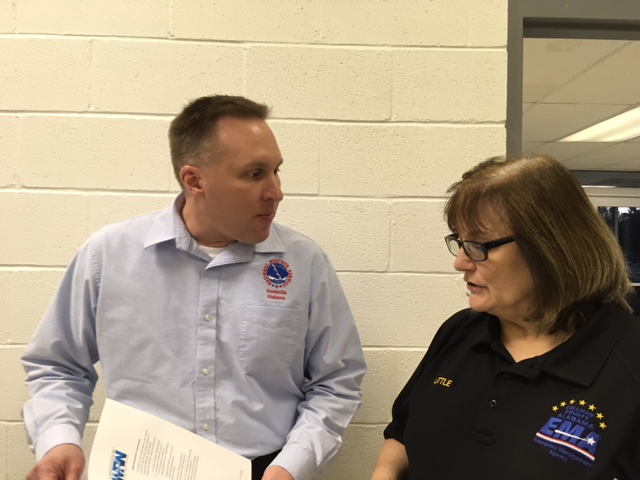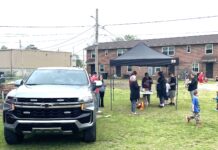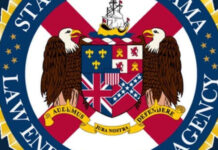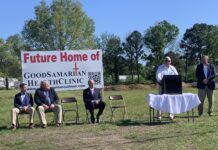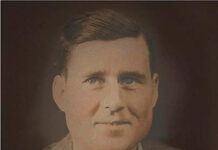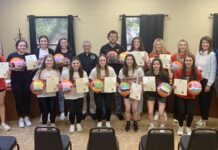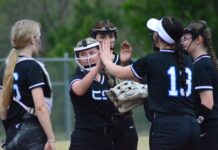NWS Huntsville's Dan Dixon and Cullman County EMA Director Phyllis Little talk before the program
COLONY – When the news or your weather radio warns you that bad weather is happening where you are, those alerts aren't just based on people looking at computer screens in Huntsville. The National Weather Service (NWS) Huntsville office does have computer screens full of various images from its radar station, but radar can only go so far and can only show so much. The NWS benefits greatly from "boots on the ground," or in this case, eyes on the sky, out in the areas where weather events are actually taking place.
The NWS created Skywarn, an organized body of local residents who call or radio to their regional offices eyewitness information about weather events as they happen. These citizen meteorologists are known as storm spotters.
On Thursday evening, NWS Huntsville representative Dan Dixon came to Colony to conduct a storm spotter training class for interested people in Cullman County.
Dixon said of the program, "Our goal is to train the public to be able to spot pertinent weather features, not just related to storms, but also other hazardous weather, and report those back to the NWS as part of the mission that we have to protect life and property. We're basically training citizens to help their fellow citizens, by reporting hazardous weather to the NWS. That can help us in our warning and decision-making process."
Cullman County is, obviously, no stranger to dangerous weather. Cullman County Emergency Management Agency (EMA) Director Phyllis Little expressed hope that events like this might be one more tool to help people feel prepared for future events.
“Cullman County has a history of severe weather,” said Little. “Everyone remembers what we faced almost six years ago during the 2011 storms. Unfortunately for us, we lost two people in those storms. Fortunately for us, we only lost two people in those storms. There could have been so many more deaths, which is what we expected when we came out of our office and started to do damage assessments. But the people of Cullman County, over many years, have taken to heart and prepared for storms, and stayed aware of what was happening. We’re hoping this is going to help you, too.”
Several weather-related topics were covered, including:
- Identifying the types of clouds that produce dangerous storms
- Identifying parts of storm clouds, to determine what is happening in them
- Seeing the differences between tornadoes and other cloud-to-ground phenomena
- Effects of microbursts and the six categories (EF-0 to EF-5) of tornadoes
- How to report weather events
- Storm safety in the home
- Storm safety on the road
- Avoiding the dangers of lightning and floods. While Cullman area residents are understandably sensitive to the danger of tornadoes, Dixon pointed out that lightning and flooding are far more common killers.
Thirty-three area residents attended the event. Each student who completed the two-hour class can apply for certification as a Skywarn storm spotter, and will have access to a private phone line at NWS Huntsville for reporting. By the way, these are not storm chasers, who recklessly pursue moving storms at close range. For a spotter, the work is often as simple as looking out one's front door and reporting what is seen.
For more information on the Skywarn program, including other upcoming training opportunities, visit http://www.nws.noaa.gov/skywarn or the Huntsville office’s site http://www.weather.gov/hun/.
Copyright 2017 Humble Roots, LLC. All Rights Reserved.

